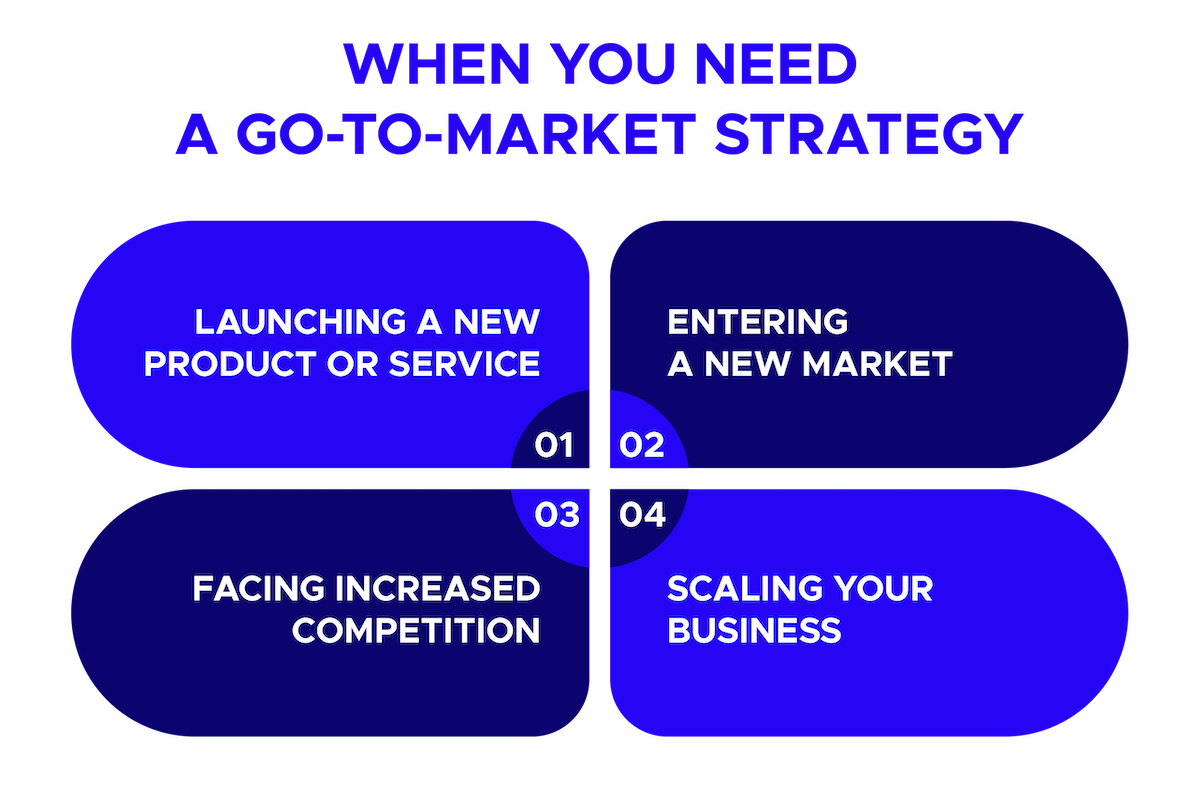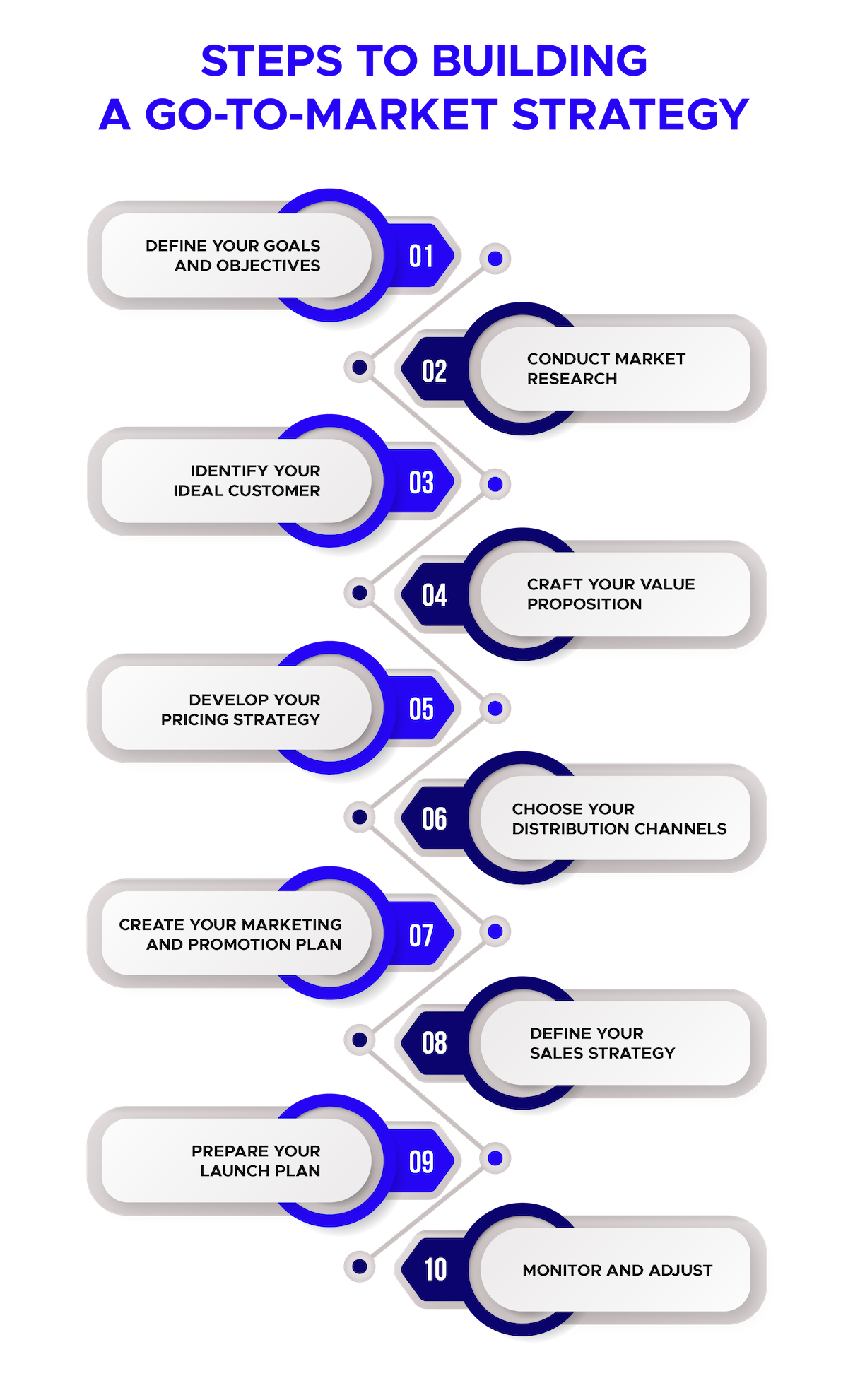Unveiling the Go-To-Market (GTM) Strategy
Last Update: 12 September 2023
Table Of Contents
1. What is a Go-To-Market Strategy?
2. When You Need a Go-To-Market Strategy
3. Benefits of Using a Go-To-Market Strategy
4. Core Components of a Go-To-Market Strategy
Welcome to the world of Go-To-Market (GTM) Strategy, where business brilliance meets the road to success! In this article, we’ve unwrapped the secrets of crafting a killer GTM strategy, but why should you stick around?
Well, if you’re craving the roadmap to launch your product like a pro, if you want to outshine competitors, and if you’re curious about making your mark in the market, then this read is your golden ticket. Ready to pave your path to victory? Let’s dive in!
What is a Go-To-Market Strategy?
A Go-To-Market strategy, often abbreviated as GTM strategy, is the blueprint that outlines how a company will bring its product or service to market. Think of it as the guiding light that directs every aspect of your business from product development to marketing, sales, and customer support. It’s not just a plan; it’s a comprehensive approach that answers the fundamental question: “How do we win in the marketplace?”
When You Need a Go-To-Market Strategy
A GTM strategy is not a one-size-fits-all solution. Its necessity largely depends on the nature of your business, your target audience, and your product or service offering. Here are some situations when having a well-defined GTM strategy is crucial:
1. Launching a New Product or Service
When you’re about to introduce something new to the market, you need a strategic plan to ensure its successful reception. A GTM strategy helps you identify your target audience, understand their needs, and position your offering effectively.
2. Entering a New Market
Expanding your business to new geographical regions or market segments requires a tailored approach. A GTM strategy can help you adapt your product, pricing, and messaging to resonate with the specific audience you’re targeting.
3. Facing Increased Competition
As the business landscape evolves, so does the competition. A GTM strategy can help you stand out in a crowded marketplace by emphasizing your unique value proposition and addressing customer pain points.
4. Scaling Your Business
When your company experiences growth, it’s vital to have a structured approach to maintain consistency in customer experience, messaging, and operations. A GTM strategy provides the necessary framework.
Benefits of Using a Go-To-Market Strategy
Now that we’ve established when you might need a GTM strategy, let’s dive into the benefits it brings to your business:
1. Clarity of Purpose
A well-defined GTM strategy sets clear objectives and provides a roadmap to achieve them. It ensures that every team member understands their role and how it contributes to the overall success of the company.
2. Efficient Resource Allocation
By identifying your target audience and market segments, a GTM strategy helps you allocate resources where they are most needed. This means you can optimize your marketing budget, sales efforts, and customer support.
3. Faster Time-to-Market
A GTM strategy streamlines your product development and launch processes. It enables you to get your product or service to market faster, gaining a competitive edge and potentially increasing revenue.
4. Improved Customer Engagement
Understanding your customers’ needs and pain points is at the core of a successful GTM strategy. This knowledge allows you to create marketing campaigns and customer experiences that resonate, leading to higher customer satisfaction and loyalty.
5. Competitive Advantage
In a world where competition is fierce, a well-executed GTM strategy can be a game-changer. It helps you differentiate your brand and offerings, positioning you as a leader in your industry.
Core Components of a Go-To-Market Strategy
To create an effective GTM strategy, you need to address several core components. Let’s break them down:
1. Market Analysis
Begin by researching and understanding your target market. This involves identifying your ideal customers, assessing market trends, and analyzing your competitors.
2. Customer Segmentation
Not all customers are the same. Segment your audience based on demographics, behavior, and needs. This allows you to tailor your messaging and approach to each group.
3. Value Proposition
What makes your product or service unique? Define your value proposition clearly and concisely. This should communicate the benefits your offering provides to your target audience.
4. Pricing Strategy
Set a pricing strategy that aligns with your value proposition and target market. Consider factors like production costs, competitor pricing, and perceived value.
5. Distribution Channels
Determine how you will deliver your product or service to customers. Will you use direct sales, e-commerce, third-party retailers, or a combination of these channels?
6. Marketing and Promotion
Craft a marketing plan that outlines how you will reach your target audience. This may involve online advertising, content marketing, social media, email campaigns, and more.
7. Sales Strategy
Define your sales approach, including the sales team’s structure, training, and goals. Ensure that your sales strategy aligns with your marketing efforts.
8. Launch Plan
Plan the launch of your product or service carefully. This includes setting a launch date, organizing promotional events, and preparing sales and marketing materials.
Steps to Building a Go-To-Market Strategy
Building a robust GTM strategy requires a systematic approach. Here are the key steps to guide you through the process:
1. Define Your Goals and Objectives
Begin by setting clear, measurable goals for your GTM strategy. What are you trying to achieve? Whether it’s market share growth, revenue targets, or customer acquisition, your goals should drive the entire strategy.
2. Conduct Market Research
In-depth market research is the foundation of a successful GTM strategy. Understand your market, your competitors, and your target audience. Gather data on market trends, customer preferences, and pain points.
3. Identify Your Ideal Customer
Segment your audience to create detailed customer profiles. What are their demographics, behaviors, and needs? This information will help you tailor your messaging and marketing efforts.
4. Craft Your Value Proposition
Based on your market research and customer profiles, define a compelling value proposition. This should communicate how your product or service addresses specific customer pain points and offers unique benefits.
5. Develop Your Pricing Strategy
Set a pricing strategy that reflects your value proposition and market positioning. Consider factors such as production costs, competitor pricing, and perceived value.
6. Choose Your Distribution Channels
Decide how you will deliver your product or service to customers. Consider the most effective and efficient distribution channels for your target market.
7. Create Your Marketing and Promotion Plan
Craft a detailed marketing plan that outlines your promotional activities. This should include online and offline marketing efforts, content creation, and advertising strategies.
8. Define Your Sales Strategy
Develop a sales strategy that aligns with your marketing efforts. This includes defining your sales team’s structure, training, and goals.
9. Prepare Your Launch Plan
Plan the launch of your product or service meticulously. Set a launch date, organize promotional events, and create marketing materials that build anticipation.
10. Monitor and Adjust
Once your GTM strategy is in motion, continuously monitor its performance. Analyze data, gather feedback, and be ready to make adjustments as needed to optimize your approach.
Conclusion
In conclusion, a well-crafted Go-To-Market (GTM) strategy is the backbone of any successful business endeavor. It provides clarity, direction, and a competitive edge in a constantly evolving market. By understanding when and how to implement a GTM strategy and by diligently addressing its core components, you can chart a course for your business’s long-term success.
Infographic
Save these infographic and use it when you need it


Let’s Talk!
If what you see here is relevant for you and can help you grow your business or organisation, we’d love to discuss further with you. Drop us a message or schedule an appointment with us.
